Namibia is a country that I never knew was so adventurous and stunning until I spent a week roadtripping its entire height. It was the first country of five of my three-week roadtrip with Put Foot Rally; an insanely awesome event that gathers travelers from all over, and sends them on a self-guided route in all sorts of vehicles.
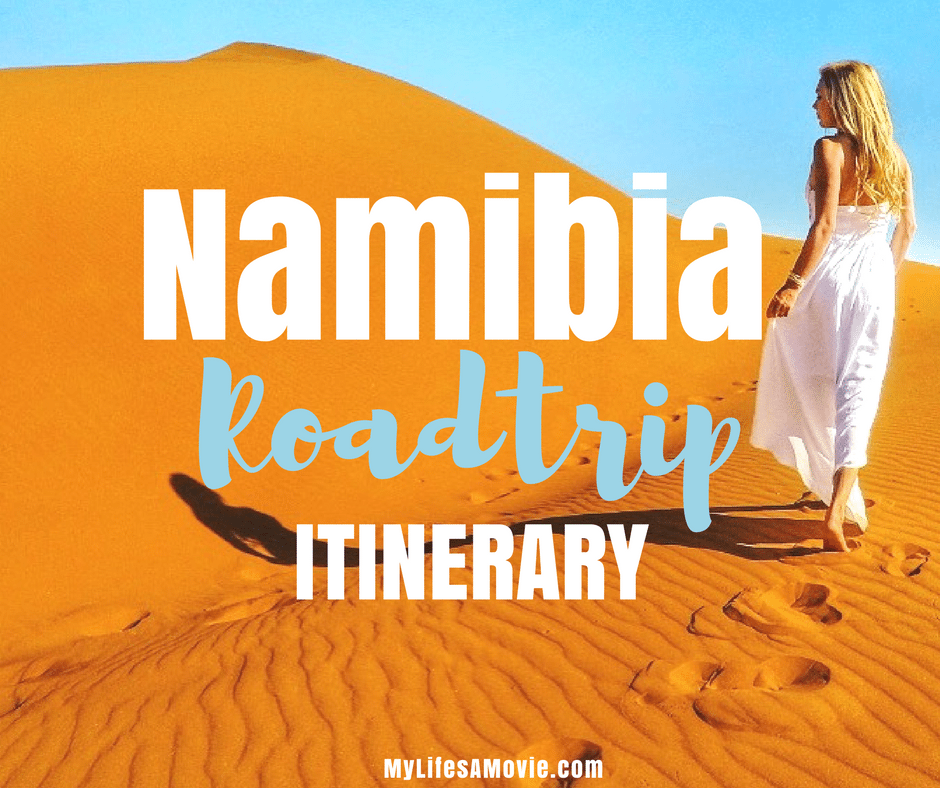
The goal is to see as much as the real Africa as possible, while maintaining a budget, and having fun along the way. One of the rally’s main purposes aside from proving that Africa is safe and do-able on a budget, is also providing a great deal of charity work along the way.
So for our first stop after meeting in Cape Town, was crossing the border into Namibia, and seeing as many of its incredible sites as possible before hitting the border of the next country.
While the rally allows you to decide what level of accommodation you want to budget for (camp, hotel, resort, etc.), my itinerary is a mix between camping in a rooftop tent, glamping, and a couple nice lodge stays!
So here’s where I went, stayed, and all of the information you need to plan your own roadtrip through Namibia…unless you want to just wait to do it again with us at Put Foot Rally next year!
But first you probably want to know some important things like…
Things to note:
- 13 Rands = $1 USD
- Drones are NOT allowed in any National Parks unless with special permission
- Do not take or make bribes with ANYONE
- Try not to drive at night
Jump To:
What is Driving Like in Namibia?
Namibia is very big; about the height of the West Coast of the U.S. if you’d like a comparison. That being said, there are A LOT of long stretches of road that take hours to traverse in order to get to the next location. Be patient, and watch for animals. They especially like to jump out at night.
You’ll need to drive on the left side of the road (and get used to the steering wheel being on the right), but you should get used to it in no time at all. Most vehicles are also manual (stick shift), but don’t worry if you don’t know how to do it…I learned how in less than 3 minutes!!
Start: Namibia Border Crossing
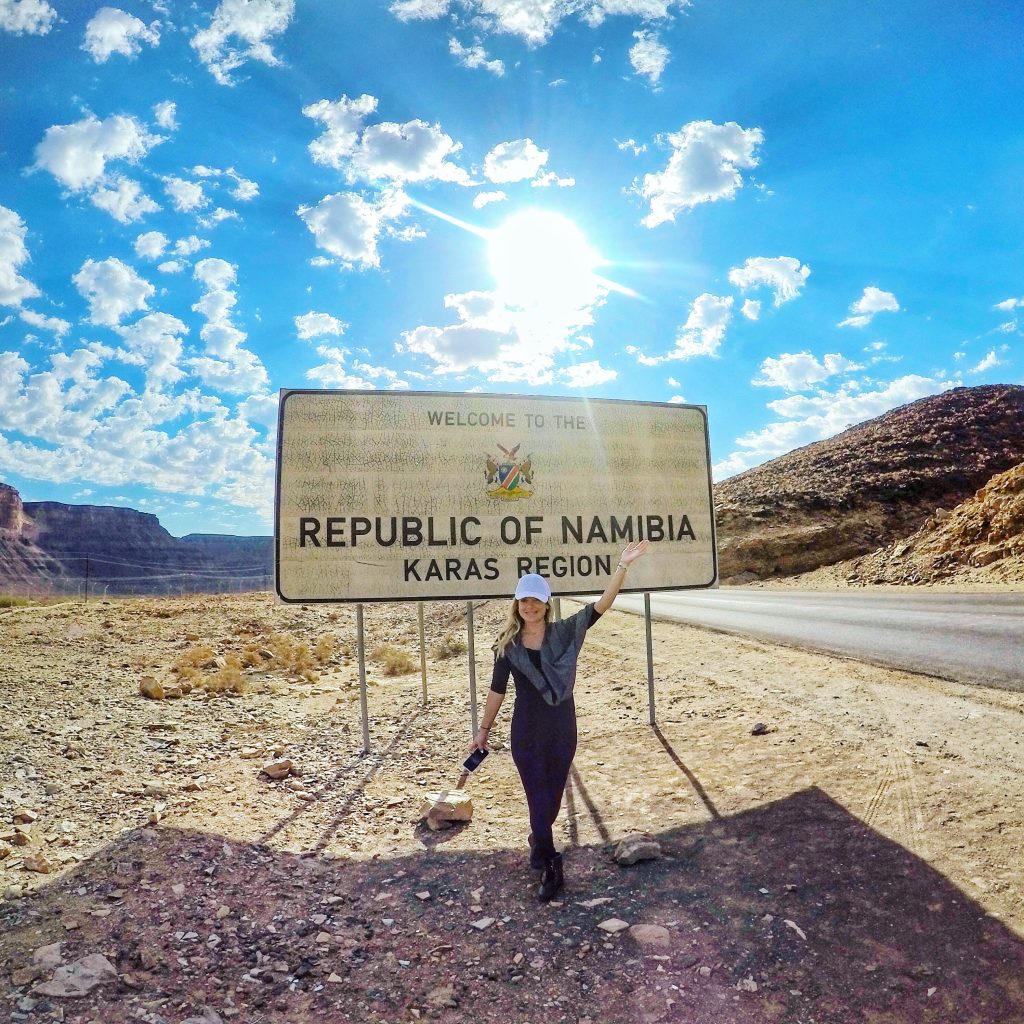
Crossing borders overland (in a car) for some reason is always a little more nerve wrecking for me than it is at an airport. But, aside from the multiple check points, it really wasn’t too bad.
Just make sure that you have your passport, cash (South African rand is accepted), and your vehicle’s information. You’ll be asked for your vehicle’s registration number a lot, especially at campgrounds, so make sure you know it or have it handy at all times!
You’ll also need to pay a fee of 250 Namibian/Rands for standard vehicles, and an additional fee for camper vans and trailers.
Sidenotes: Don’t fill out any forms with red pen, and if you’re planning on bringing donation items, make sure you have the proper paperwork for them, otherwise you will not be allowed to.
1. Fish River Canyon
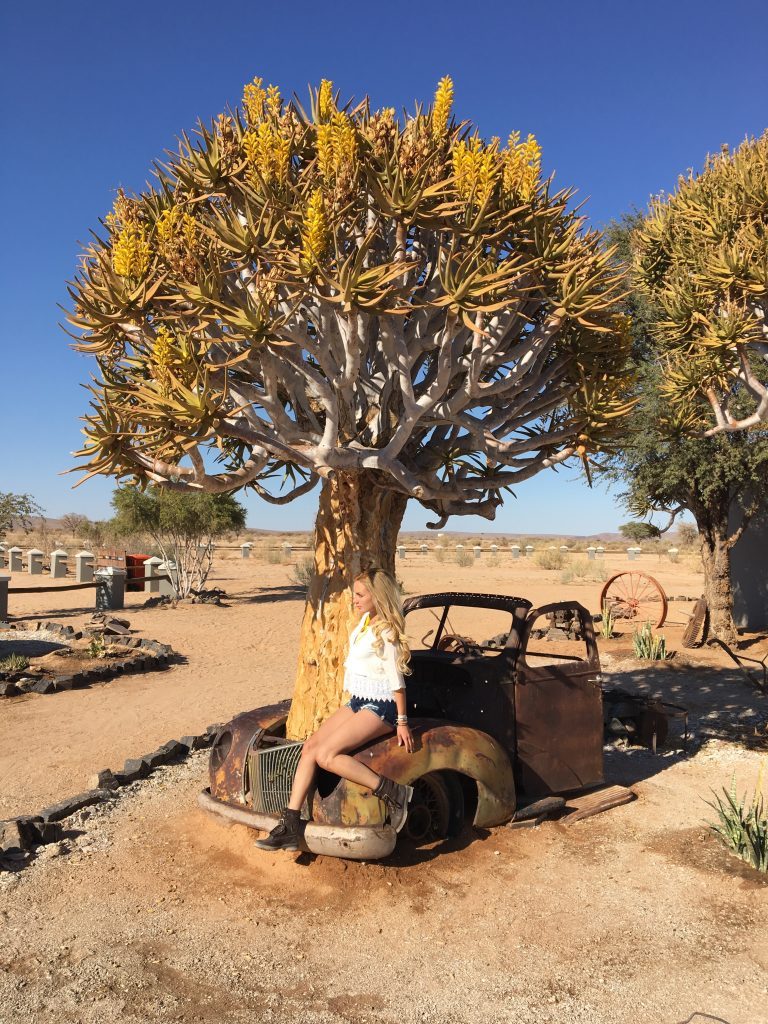
Distance: 5-6 hours
Entry: 80pp
If you can plan to get to Fish River Canyon for sunset, you’ll be in for a real treat! Locals joke that it’s like the Grand Canyon of Namibia, and to be fair, as someone who has seen both, it’s not too far off (other than scale).
If you don’t make it for sunset, there’s always sunrise, or if anything, just go during the day! Make sure to drive extra carefully after sunset and before sunrise…because that’s when Springbok, Kudu, and other animals like to run across the road in front of cars!
Where to stay: Gondwana Collection Canyon Roadhouse (camping or lodge accommodation)
Wifi strengh: Weak
Perks: Cool atmosphere and bar, yum food
2. Helmringhausen
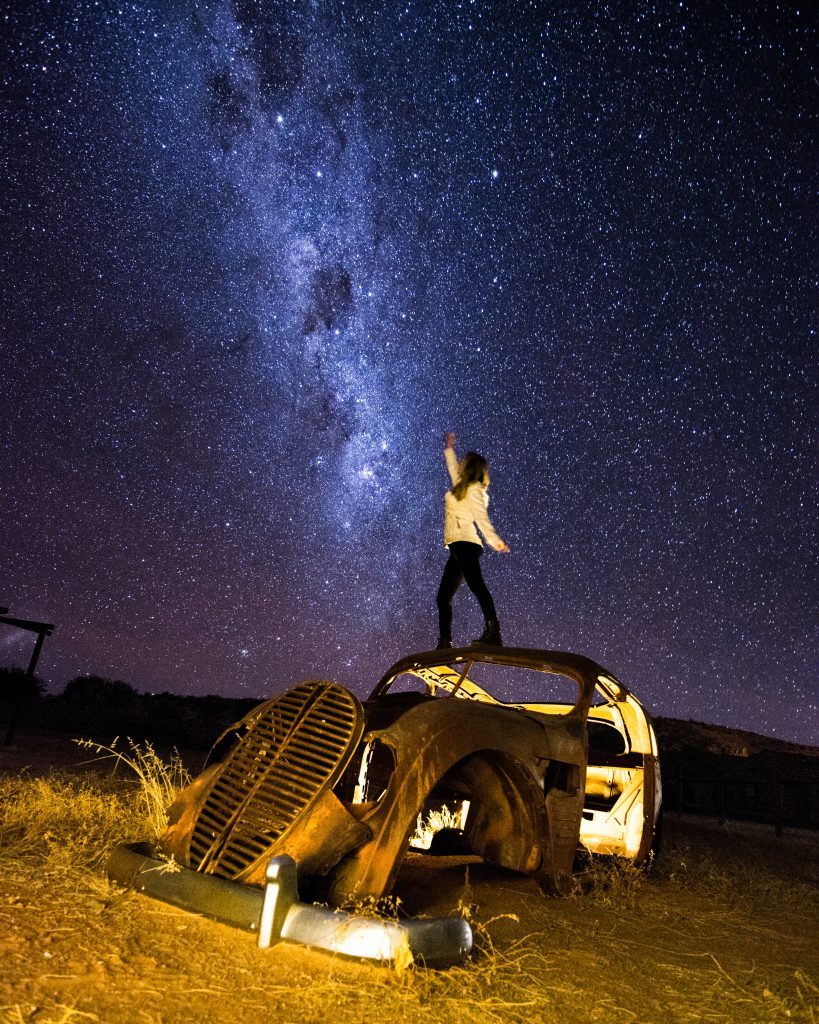
Distance: 4.5 – 5 hours
To be completely honest, I stopped in Hiemringhausen because I saw a sign for a beer garden and the “best apple pie in Namibia”, along with three massive cartoon figures made out of hay bales. Long story short, I ended up camping there for the night along with some other Put Footers, and had one of the most spectacular nights ever!
Aside from the beer and pie being great, the garden is absolutely adorable with its chic rustic designs. In the camping area there’s a large pit for cooking, or as the South Africans say, “braai”.
But the thing that stood out the most, was how bright and clear the Milky Way was in this little town! It’s literally the only town for miles (in fact, everything in it is owned by the same guy), so there’s nothing to block the bright star lights!
Where to Stay: Helmringhausen Hotel and Campsites
Wifi: Non-existent
Perks: Adorable, and a great break between two locations
3. Sosussvlei / Namib Desert
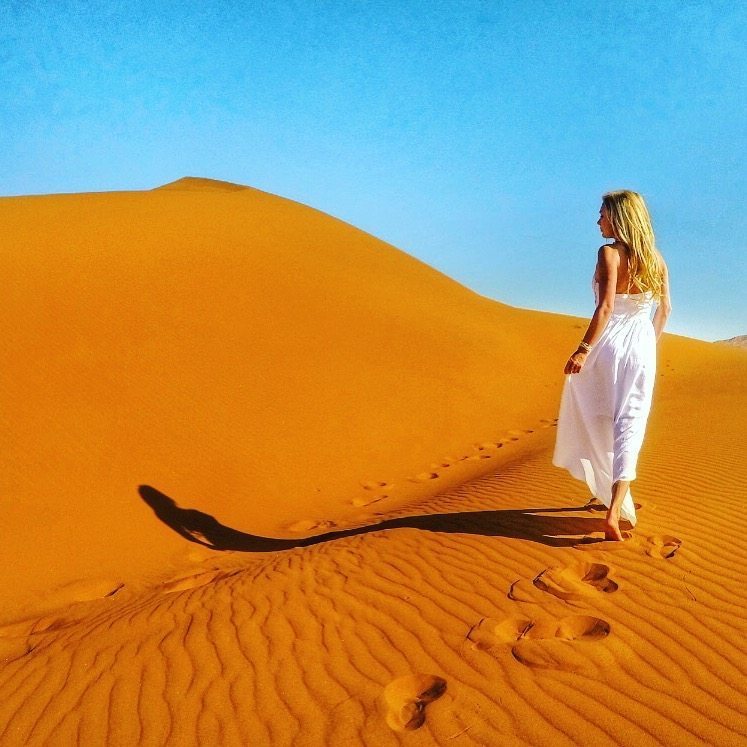
Distance: 4 hours
Entry: 80 pp / 10 per vehicle
Sosussvlei is DEFINITELY a must-see, and for many, it’s one of the main reasons for traveling to Namibia! Here is where you’ll see the Namib Desert National Park, which is famous for its massive red sand dunes.
They are seriously a stunning sight to see at any time of day, although most people prefer sunset and sunrise (except me because I like bright photos).
Most people also come here mostly for Dead Vlei, which is at the very end of the park, and only open for sunrise (when all the photographers try to go) if you camp inside the park at their campsite, which I did.
Where to stay: Sesriem NWR Camp INSIDE the gates of the park
Cost: 200 pp
Wifi: Decent, vouchers cost 100 rand for 350mb
Perks: Nice bar area and restaurant, access to the park before tourists arrive
4. Dead Vlei

Distance: 1 hour + 30 minute hike over sand dunes
Cost: Included in Namib Desert Permit
Dead Vlei is hands-down the most photographed area in Namibia. Although technically it’s just a dehydrated lake with dead trees in it, it’s bizarre appearance and striking color contrasts make it extremely seductive to the eye.
To get there you must drive an hour from the main Namib Desert National Park gate, which opens at 7, or if you camped inside the gate, you can get early access at 5:45am. As I mentioned before, most people who opt for sunrise are professional photographers who prefer the light early in the morning.
For me personally…I definitely could have skipped sunrise. The valley that Dead Vlei is in is surrounded by dunes, including “Big Daddy”, the largest sand dune in the world, which blocks the sun until about 7:30am. AKA, I sat in the cold shadow for an hour before I could even take a photo.
Usually I recommend getting there at the crack of dawn to avoid crowds, but to be completely honest, the crowds that hiked in later only went to the rim, took photos, then left. Hardly anyone went further along the white dried mud, EXCEPT the groups of photography tours and other photographers that came at sunrise. Go figure.
Speaking of “Big Daddy”…climbing it is apparently a thing, but after climbing a few smaller ones the day before, there was no way I was up for more sand hikes. If you’d like to have a go at it, it’ll take you about 2 hours to get up, and 10 minutes to get down. There’s also a chance you might fall on your face trying to come down.
Important things to note for Dead Vlei:
You need a 4X4 vehicle for the last 6km of road to Dead Vlei due to soft sand. If you don’t have one, you can pay 150 for the shuttle, or walk.
The walk from the parking lot to the dead tree area is 30 minutes in soft sand…AKA it gets brutally hot.
Drones are illegal in National Parks everywhere, including at Dead Vlei/Namib Desert, UNLESS you apply for and are approved for a special permit (usually if you’re an established photographer, journalist, scientist, etc.). I happen to have one, and so did my photographer, so we were able to fly it briefly, but I must fully disclose that you are not allowed to, and should not fly a drone there or any National Park. (Also because I get yelled at if I don’t mention that)
5. Windhoek
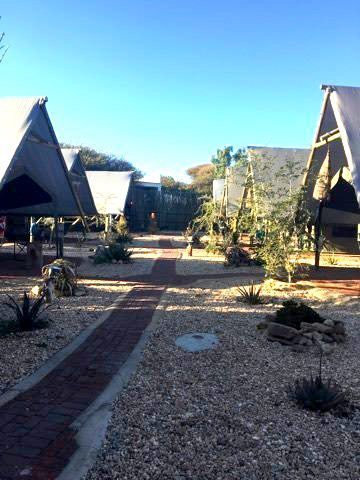
(Pronounced: “Vint-hook”)
Distance: 3.5 hours
Windhoek is the largest city in Namibia, and we mainly went there because we didn’t have enough time to drive to the coast to see Swakopmud.
If you’re not trying to hang out in a city, definitely skip it, but if you want a day/night in proper civilization with fast internet and tons of food and accommodation options, go ahead and make the stop. It’ll probably be your last stop to stock up on supplies before heading off again on the beaten track.
I actually ended up “glamping” for the first time at an adorable spot called Urban Camp, which I’d highly recommend. The fancy tents are massive, and decked out with the cutest glam-camping accessories and decor I’ve ever seen!
Where to Stay: Urban Camp
Wifi: GREAT!
Perks: Adorable chalets, awesome staff, and walking distance to the World-famous, Joe’s Beer House!
6. Outjiwarongo
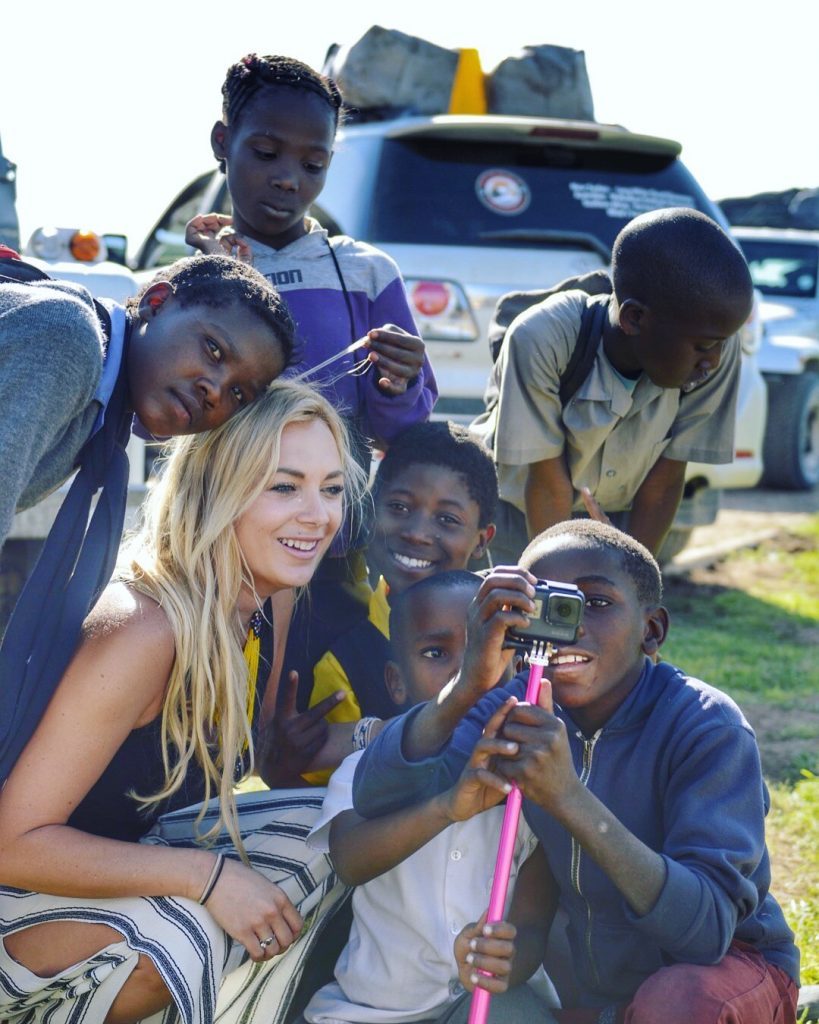
This probably isn’t a place most of you will want to stop at **{last place to stop before heading into the wilderness} , but I’m including it because it’s where we had our first of four shoe drops for the Put Foot Foundation. The purpose of the foundation is to put new shoes on the feet of less-fortunate kids throughout southern Africa, and this year they raised enough money to purchase 2000 shoes!
During our first shoe drop, we helped fit shoes on 500 kids from about 10 different schools in the area. The shoes are high-quality leather, and designed to be a “grow-able shoe”, which adjusts in size so the kids can wear them for up to 5 years as their feet grow.
After all 500+ kids were properly fitted and given their new shoes, I got to go and play with them, which, mostly consisted of them playing with my iPhone, GoPro, hair, or simply just holding my hand. At one point I even had a dance circle going, and have to admit…they can dance way better than I can!
7. Etosha National Park

Distance: 30-40 minutes
Cost: 80pp + 10 per vehicle
Etosha National Park is definitely the primary reason why most people come to Namibia, and for a very good reason! You freaking feel like you’re living in a live version of the Lion King! It’s not just like “Maybe you’ll see a lion” either…it’s like, there’s a 90% chance you will see one, along with African Elephants, and Black Rhinos.
As an extreme animal lover, I spent two days driving around almost every possible road and water hole in Etosha, and saw almost every animal! I saw a stunning male lion, and 5 gorgeous lionesses, and came face to face with a Black Rhino; all of which were right outside of my window!
You can’t get out of your car (for obvious reasons) along the game drive roads, but you can stop at one of the few lodges/campgrounds, and walk to a watering hole on site with a fence around it. Well, the fence is around the human area (for once), that way the wild animals are free to come and go to the watering hole as they please.

You can sit and watch for hours as different types of animals come to the water holes, especially at night. At my campground (Halali), I saw a Black Rhino, two elephants, and a hyena during the two trips I took to the water hole at night!
By the way, in case you haven’t guessed already…the animals like to hang out at water holes, so that’s where your best chance of seeing them are! They also prefer to come out early in the morning (sunrise) or at night, but since you’re not allowed driving when it’s dark, your best bets are just after sunrise or sunset. Or to go to a camp watering hole at night.
Also, don’t underestimate how much time you’ll need at Etosha. The fist day I drove almost for 10 hours, and the next day about 6! It takes nearly 3 hours just to drive to from the main lodge to the farthest east gate!
ALSO! Don’t forget to pay for your permit at Okaukuejo!!! If you don’t pay it there, they’ll send you all the way back from whatever gate you try to exit out of!
Okaukuejo is the fanciest lodge, and also has one of the best water holes that I saw. It also has a fuel station, gift shop, mini-market, and tourist information center!
Be sure to pick up the map like mine to see where the water holes are, and what types of animals your spotting!
Where to Stay:
Inside the Park: Halali or Okaukuejo Camp
Cost: 180 Rand
Wifi: Decent, Vouchers available for 100 per 350mb
Perks: Nice shower facilities, restaurant, pool, water hole (for animals) with night-lights
Outside the Park: Toshari Lodge
If you’re looking for a more luxurious option (or even semi-luxurious since campsites are also available), definitely check out Toshari Lodge, which is just outside of Etosha National Park!
Its main lobby and recreational area is freaking fabulous, and also brand new, and includes an open-air setting, and multiple sparkling pools. I got to take a break from my camper truck and stay the night in one of the Toshari Lodge chalets, which was like a private piece of paradise hidden amongst nature!
Other Stops on the Way to the Botswana Border
8. Tsumeb

If you end up spending an additional full day in Etosha like I did, you’ll probably want to stop somewhere for the night nearby.
Tsumeb is the closest town from the Von Lindequist Gate of the National Park, and there’s a really nice campground there called Kupferquelle Resort. Campsites each have their own braai and electrical outlets (YUP), and the bathrooms are also really nice and private.
There’s also a popular restaurant/bar and wine cellar there called Dros, which pretty much has every type of food you can imagine…and pretty fast wifi!
9. Bagani
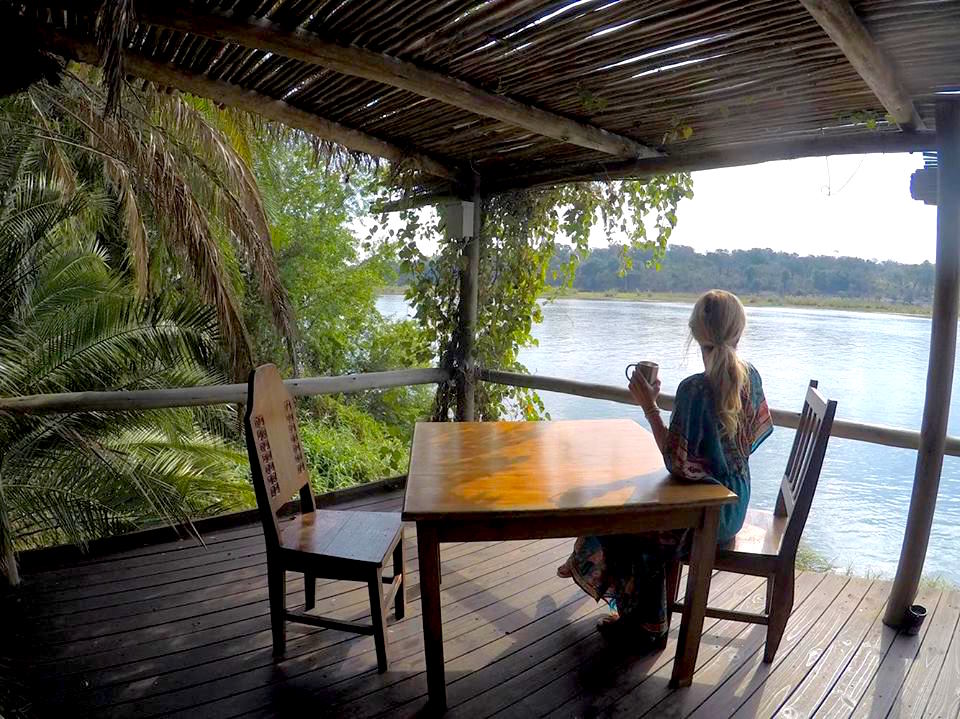
Depending on your route (mine was to cross into Botswana), you should stop in Bagani, solely to see this adorable campground called Ngebi Camp. The drive to get from the main road to the camp is an adventure itself, and that’s because it’s set up along the Zambezi River!
Almost every campsite is along the river, and if you can afford to splurge a little, you can stay in your very own treehouse! Speaking of the Zambezi River…it’s filled with crocodiles and hippos, and you can see both from the banks!
But the thing that Ngebi Camp is most famous for…is its bathrooms! Each one is different, but all are creatively built in nature, with the only privacy being a bamboo curtain, trees, and bushes. To give you an ida of what I mean…think of why one is called “The Garden of Eden”!
The showers are also nature-esque as well, with the best one (in my opinion) being the Fish Eagle Bath, which is an open air tin bathtub perched on a wooden deck that overlooks the Zambezi River!
10. Botswana!
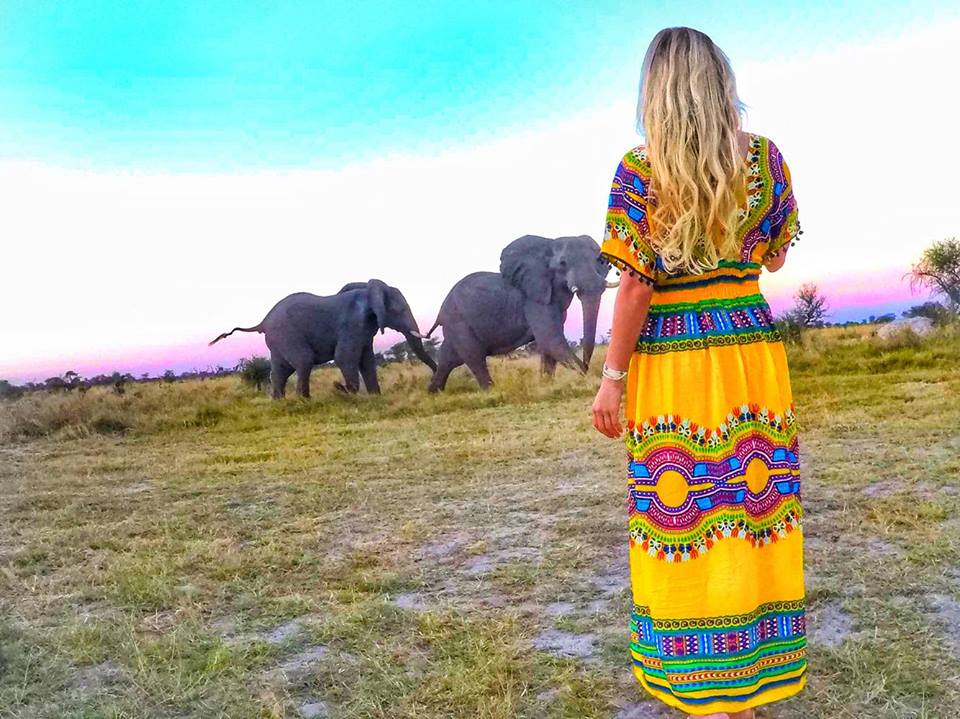
If you have time, I’d highly recommend continuing your roadtrip into Botswana! It’s a truly beautiful country, with tons of amazing wild life, including wild African Elephants! In fact, you can camp at a place called Elephant Sands, where your tents and chalets are set up around a watering hole that wild elephants come to every night! Check out my blog post about it if you’re interested!


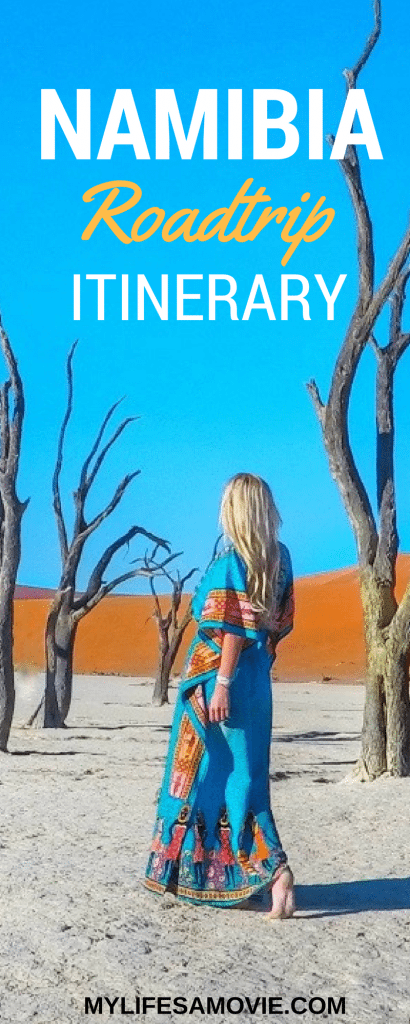
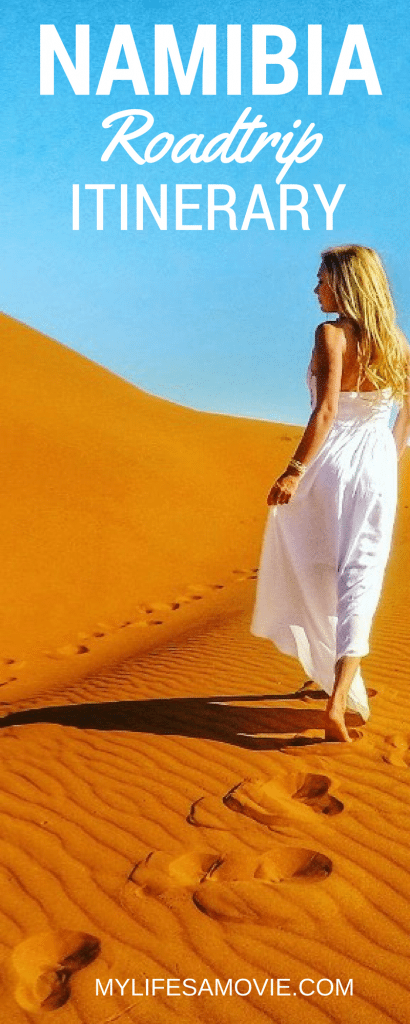









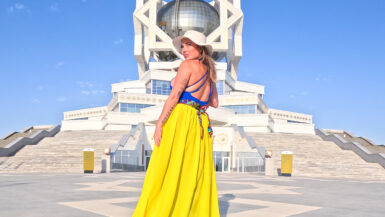
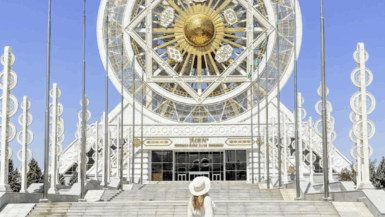
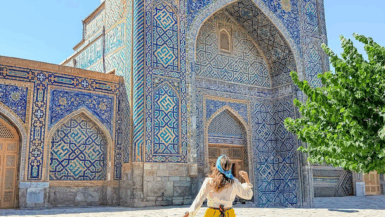
Hey Alyssa! Please let me know if you’ll be doing another PutFoot Rally this year. Im very interested to join 🙂
Thanks!
Hi Chris! I won’t be on it this year but they’re still doing it! I believe they’ve even added in a bus option for the solo travelers! Check out their website!
Namibia is one of those countries I barely know anything about, but from the images I’ve seen, definitely want to visit. This post is immensely inspiring! Thank you!
On an average day I typically skim through 2-3 travel guides. (The majority are guides and itinerary for Africa) I would just like to tell you that this one manages to stand out. I truly enjoyed this guide 🙂
Thank you Tamara! I really appreciate that, worked very hard on it! 😀
Very informative, and has me wanting to get to Africa sooner, rather than later. Put a foot rally sounds like a great cause (hadn’t heard of it until your posts) would love to participate in one, will have to look into it, this year I’ll just have to stick with donating
Yes!!! I’ll probably do it next year and will make it a travel tribe trip! You should definitely do it!
Is there an email list that I could sign up for or something to specifically learn more about a group trip to Put Foot Rally?? Very interested for next year! Please let me know more information.
Hi Caitlin! I’m still working on it but shoot me an email with your email and name and I’ll add ya to my contact list for Put Foot!! Email is alyssa@mylifesamovie.com 🙂